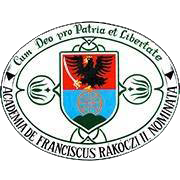Please use this identifier to cite or link to this item:
https://dspace.kmf.uz.ua/jspui/handle/123456789/3476| Title: | Kárpátaljai családok a „málenkij robot” árnyékában |
| Other Titles: | Carpathian Families in the Shadow of the “Malenkey Robot” |
| Authors: | Molnár D. Erzsébet Молнар Д. Єлизавета Yelyzaveta Molnar D. |
| Keywords: | Kárpátalja;málenkij robot;elhurcolás |
| Issue Date: | 2022 |
| Publisher: | ELTE BTK |
| Type: | dc.type.researchArticle |
| Citation: | In Bali János – Deáky Zita – Vámos Gabriella (szerk.): Családok a kitelepítések árnyékában. Tanulmánykötet. Budapest, ELTE BTK, 2022. pp. 45-56. |
| Abstract: | Kárpátalján az 1944 őszén kezdetét vevő szovjetizálás minden tekintetben átalakította a
régió politikai, gazdasági és társadalmi berendezkedését. A hatalomváltás hozta új életforma
a szovjet séma lokális kivetítését jelentette az újonnan szerzett területre, és a több dimenzióban megkezdődő szovjetesítés nagymértékben hatott a területen élő lakosság életére.
A szovjet rendszer kiépítésének folyamatában a kárpátaljai magyarságot ért
legdrasztikusabb intézkedés kétségkívül
a magyar férfilakosság tömeges elhurcolása, a „málenkij robot” volt. E tragikus
intézkedést megelőzte a régiót megszálló
4. Ukrán Front Katonai Tanácsának ülésezése 1944. november 12-én, amikor
meghozták az akkor még szigorúan titkos 0036. számú határozatot, amelyben
elrendelték a területen élő 18–50 éves korú
német és magyar nemzetiségű hadköteles
személyek összeírását, majd ezt követően
külön osztagokban, listák szerint, konvoj alatt hadifogoly-gyűjtőhelyre történő
irányítását.1
Másnap, november 13-án
Kárpátalja-szerte falragaszok jelentek meg
Városparancsnokság 2. számú parancsa
címmel, amely minden nagyobb településen hirdette a 18–50 év közötti magyar és
német nemzetiségű férfilakosság jelentkezési kötelezettségét. A parancs tartalmazta
továbbá azt is, hogy abban az esetben, ha valaki nem teljesíti a parancsot, akkor haditörvényszék elé kerül. A jelentkezés utolsó napjaként a hatóságok november 16-át jelölték meg. Abstract. “Malenkey robot” can be considered as the most tragic Soviet measure that hit the Transcarpathian Hungarians at the end of the World War II. It was an ethnic cleansing which began in November 1944 and according to available archival sources we can state that approximately 30 000 people were deported from the region to the Soviet prisoner-of-war camps. The deportations affected all Hungarian-inhabited settlements in Transcarpathia. About one-third of the prisoners could not return to their homeland because they did not survive hunger, inhumane conditions and treatment. In addition to the direct victims of the deportations, the family members of the deportees can also be included in the framework of interpretation that we mark as the victims of the “malenkey robot”. As a result of the deportation of the heads of families, the women who remained at home were faced with the difficulties of maintaining their family during such a hard period which was marked by the end of World War II and the change of Soviet power. All of this has greatly contributed to changing the previous roles of women in the family. It was typical that children had to grow up faster, as they had a much greater responsibility than before and had to take an effective part in the various jobs to help their mother. The purpose of this paper is to present the living conditions of the family members of deportees and how they were affected by the deportation. |
| Description: | https://edit.elte.hu/xmlui/static/pdf-viewer-master/external/pdfjs-2.1.266-dist/web/viewer.html?file=https://edit.elte.hu/xmlui/bitstream/handle/10831/82814/ELTE%20Csal%C3%A1dok%20a%20kitelep%C3%ADt%C3%A9sek_Megjelent%20K%C3%B6tet.pdf?sequence=1&isAllo... |
| URI: | https://dspace.kmf.uz.ua/jspui/handle/123456789/3476 |
| ISBN: | 978-963-489-492-6 |
| metadata.dc.rights.uri: | http://creativecommons.org/licenses/by-nc-nd/3.0/us/ |
| Appears in Collections: | Molnár D. Erzsébet |
Files in This Item:
| File | Description | Size | Format | |
|---|---|---|---|---|
| Molnar_D_E_Karpataljai_csaladok_a_malenkij_robot_arnyekaban_2022.pdf | In Bali János – Deáky Zita – Vámos Gabriella (szerk.): Családok a kitelepítések árnyékában. Tanulmánykötet. Budapest, ELTE BTK, 2022. pp. 45-56. | 980.37 kB | Adobe PDF | View/Open |
This item is licensed under a Creative Commons License





